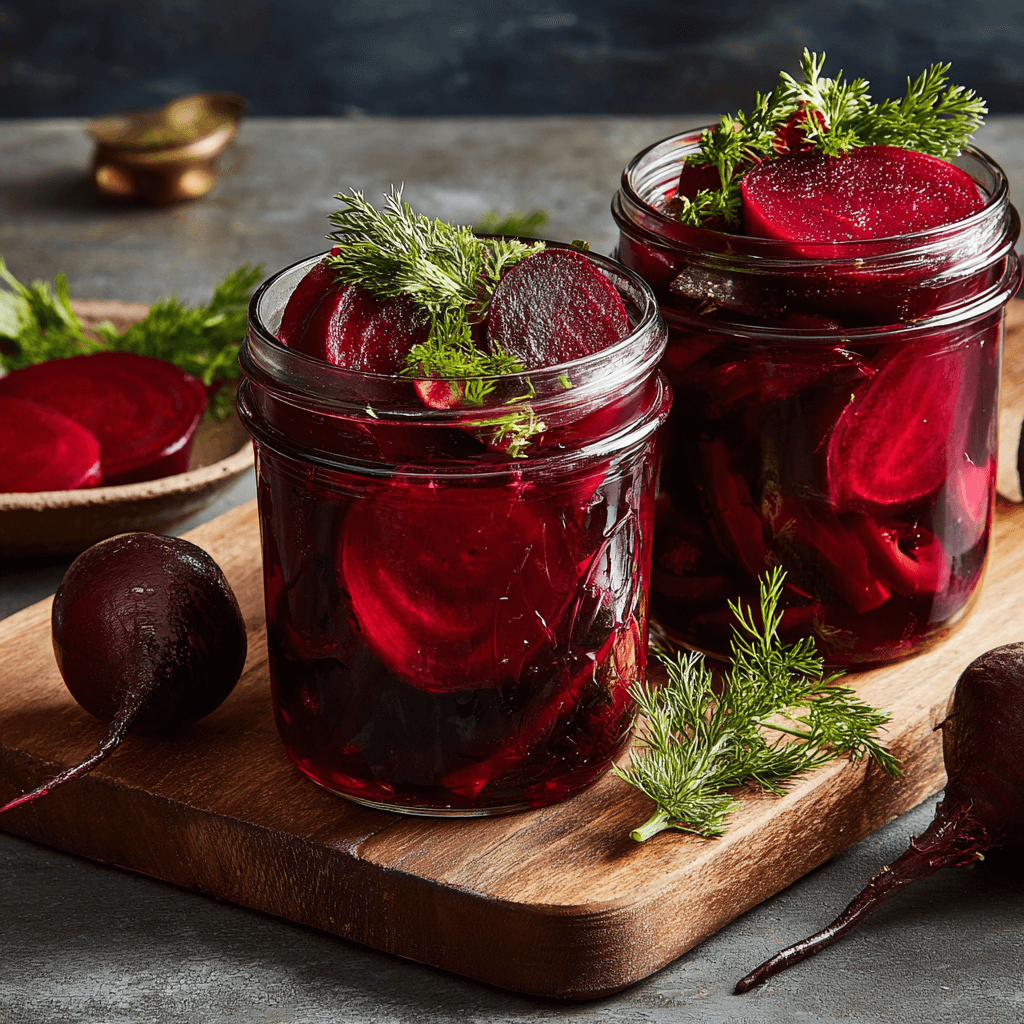Introduction to Raising Cane’s Sauce
History of Raising Cane’s Iconic Sauce
If you’ve ever tasted Raising Cane’s famous dipping sauce, you know why it’s a fan favorite. This Raising Cane’s Sauce Recipe lets you recreate the creamy, tangy, and slightly spicy magic at home. Perfect for pairing with chicken fingers, fries, and more, this simple recipe uses everyday ingredients for a restaurant-quality experience in your kitchen.
What Makes This Sauce Unique?
What sets Raising Cane’s sauce apart is its perfect balance of flavors. The combination of creamy mayonnaise, tangy ketchup, zesty Worcestershire sauce, and bold spices creates a taste that is both complex and approachable. Furthermore, its smooth texture and versatility make it the perfect complement not only for chicken but also for fries, burgers, and even vegetables. It’s this unique combination that keeps fans coming back for more.
Popularity and Versatility of the Sauce
Raising Cane’s sauce isn’t just a dipping sauce—it’s a cultural phenomenon. Because of its ability to elevate nearly any dish, it has become a must-have at tailgates, parties, and family meals. Additionally, the sauce appeals to a wide audience, from kids to adults, ensuring its place as a favorite for years to come. Whether you’re using it as a dip, a spread, or even a marinade, its versatility knows no bounds.
Key Ingredients in Raising Cane’s Sauce
The Core Ingredients
To recreate Raising Cane’s sauce at home, you’ll need a handful of pantry staples. These include:
- Mayonnaise: This creamy base provides richness and smooth texture.
- Ketchup: Adds a touch of sweetness and a tangy edge.
- Worcestershire Sauce: Introduces depth and a savory umami flavor.
- Garlic Powder: Enhances the savory notes with a subtle kick.
- Black Pepper: Offers a hint of spice and balances the sweetness.
- Paprika: Gives the sauce its signature mild heat and smoky undertones.
Together, these ingredients create the rich and bold flavor profile that fans adore.
Optional Variations
Although the classic recipe is beloved, there’s always room for customization. For instance:
- Add a dash of hot sauce or cayenne pepper for extra heat.
- Mix in a squeeze of fresh lemon juice to brighten the overall flavor.
- Use smoked paprika instead of regular paprika to enhance the smokiness.
With these variations, you can adjust the sauce to suit your personal preferences, making it even more enjoyable.
Understanding the Flavor Profile
Raising Cane’s sauce is a masterclass in flavor balance. The creamy mayonnaise base mellows the tangy and spicy notes, while the Worcestershire sauce adds a savory depth that ties everything together. Moreover, the hint of paprika and black pepper gives the sauce a subtle kick without overpowering its overall richness. This harmony of flavors is what makes the sauce so irresistible and versatile, whether used as a dip, spread, or even a marinade.
By understanding these ingredients and their roles, you can easily recreate the iconic Raising Cane’s sauce at home and enjoy its magic anytime.
Tools Needed to Make the Sauce
Basic Kitchen Tools
To make Raising Cane’s sauce, you’ll need a few simple tools that are likely already in your kitchen:
- Mixing Bowl: A medium-sized bowl works best for combining the ingredients.
- Whisk or Spoon: A whisk helps achieve a smooth, lump-free consistency, but a sturdy spoon can work in a pinch.
- Measuring Cups and Spoons: These ensure the perfect balance of ingredients for a consistent flavor.
Having these basic tools ready will make the process seamless and enjoyable.
Recommendations for Precise Measurements
Precision is key when recreating this iconic sauce. Use measuring spoons for smaller quantities of ingredients like garlic powder, black pepper, and paprika. For liquids such as ketchup and Worcestershire sauce, opt for measuring cups to avoid over- or under-adding. Accurate measurements help maintain the signature flavor balance of the sauce.
Handy Tips for Blending
When mixing the sauce, start by whisking the wet ingredients (mayonnaise, ketchup, and Worcestershire sauce) together until smooth. Then, gradually incorporate the dry ingredients (garlic powder, black pepper, and paprika) to avoid clumping. For an even smoother texture, you can use an immersion blender or food processor, though it’s not required. Finally, refrigerate the sauce for at least 30 minutes to let the flavors meld together.
Step-by-Step Recipe Instructions
Preparing the Ingredients
- Begin by gathering all your ingredients. Measure each one carefully to ensure consistent results.
- Place the mayonnaise, ketchup, and Worcestershire sauce into a medium mixing bowl. Set the dry spices aside for later.
Mixing and Combining
- Using a whisk or spoon, mix the wet ingredients until they are fully combined and smooth.
- Gradually add the garlic powder, black pepper, and paprika, stirring continuously to incorporate them evenly.
- Taste the mixture and adjust the seasonings if necessary. For example, add a pinch more paprika for extra smokiness or black pepper for additional spice.
Achieving the Perfect Consistency
- Once the ingredients are thoroughly mixed, check the consistency. The sauce should be creamy and thick but easy to scoop or spread.
- If the sauce feels too thick, you can add a small splash of water or milk to adjust. Conversely, if it’s too thin, mix in a little more mayonnaise.
- Transfer the sauce to a covered container and refrigerate for at least 30 minutes before serving. This step allows the flavors to blend and enhances the overall taste.
With these tools and detailed instructions, you’ll have a homemade Raising Cane’s sauce that’s just as delicious as the original, ready to pair with all your favorite dishes.
Customizing the Recipe
Making It Spicier
If you love heat, it’s easy to adjust Raising Cane’s sauce to suit your taste. Add a pinch of cayenne pepper or a few dashes of hot sauce to kick up the spice level. For a smoky heat, use chipotle powder or smoked paprika. Another option is to finely dice a fresh jalapeño or serrano pepper and mix it into the sauce. These simple additions can turn the classic sauce into a fiery dip that’s perfect for spice lovers.
Adjusting for Sweetness
For those who prefer a slightly sweeter sauce, you can increase the amount of ketchup or add a small teaspoon of honey. To balance the sweetness, taste the sauce and ensure the tangy and savory elements still shine through. Adjusting the sweetness makes the sauce more versatile, especially for pairing with milder dishes.
Vegan and Allergy-Friendly Alternatives
Making a vegan or allergy-friendly version of Raising Cane’s sauce is simple. Substitute regular mayonnaise with a vegan alternative made from plant-based ingredients. Additionally, check that your Worcestershire sauce is vegan or replace it with soy sauce and a splash of vinegar for a similar tang. These swaps ensure everyone at the table can enjoy this flavorful dip.
Serving Suggestions
Perfect Pairings: What to Serve with the Sauce
Raising Cane’s sauce is famously paired with crispy chicken fingers, but its versatility makes it a great match for many other foods. Serve it with:
- French fries or sweet potato fries.
- Grilled chicken or roasted vegetables.
- Burgers or sandwiches for an extra layer of flavor.
Its creamy, tangy taste elevates any dish it accompanies.
Creative Ways to Use the Sauce
Think beyond dipping! Raising Cane’s sauce can be used in several creative ways:
- Spread: Use it as a spread for wraps, burgers, or paninis.
- Marinade: Coat chicken or tofu in the sauce before grilling or roasting.
- Drizzle: Add a drizzle of the sauce over salads or rice bowls for extra flavor.
Its versatility makes it a must-have condiment in your kitchen.
Dishes That Complement the Flavor
The bold yet balanced flavor of Raising Cane’s sauce pairs beautifully with dishes that have a slight crunch or need a creamy element. Try serving it with:
- Fried or baked chicken wings.
- Tempura vegetables or onion rings.
- Fish tacos or shrimp skewers for a zesty seafood twist.
By experimenting with these pairings and ideas, you’ll discover countless ways to enjoy this delicious sauce in both traditional and unexpected ways.

Tips for Perfecting the Sauce
Common Mistakes to Avoid
To ensure your Raising Cane’s sauce is flawless, it’s essential to avoid a few common errors. First, adding too much of any single ingredient, such as Worcestershire sauce or garlic powder, can overpower the sauce and disrupt its balance. Instead, always taste as you go. Additionally, skipping the resting time is a frequent mistake. Remember, the sauce needs at least 30 minutes in the refrigerator for the flavors to meld properly. Lastly, using low-quality ingredients can significantly impact the taste. Since the recipe relies on simple components, choosing high-quality mayonnaise, ketchup, and Worcestershire sauce is crucial for the best results.
Tips for Achieving the Signature Taste
If you want to replicate the signature taste of Raising Cane’s sauce, there are a few helpful tips to keep in mind. For example, using a full-fat mayonnaise ensures the creamiest texture, while selecting a ketchup that balances sweetness and tanginess prevents the sauce from being overly sugary. Furthermore, add spices gradually, tasting after each addition to maintain harmony in the flavor. Finally, always refrigerate the sauce before serving, as this step allows the ingredients to blend into a cohesive and delicious taste.
Storage and Shelf Life
Proper storage is key to preserving the flavor and freshness of your Raising Cane’s sauce. Always transfer the sauce to an airtight container and refrigerate it immediately after preparation. Typically, the sauce will stay fresh for up to a week, making it ideal for meal prep or frequent use. However, avoid leaving the sauce at room temperature for long periods, as this can affect its quality. For the best texture, give the sauce a quick stir before serving.
Variations of Raising Cane’s Sauce
Regional Twists on the Recipe
Although the classic recipe is widely loved, regional variations can offer exciting new flavors. In the Southern United States, for instance, adding a splash of hot sauce or a pinch of cayenne pepper creates a spicier and more robust taste. In contrast, a Southwestern-style variation might include cumin or chipotle powder for a smoky, earthy flavor. Meanwhile, a Midwestern twist often incorporates dill or parsley for a fresh, herbaceous note. These regional adaptations demonstrate how versatile and customizable the sauce can be.
Adding Herbs and Spices for a Personal Touch
For those who enjoy experimenting, adding herbs and spices is an easy way to personalize the recipe. Fresh herbs such as parsley, cilantro, or dill can introduce a burst of freshness. Alternatively, spices like chili flakes, smoked paprika, or even a dash of curry powder can bring depth and warmth to the flavor profile. Additionally, incorporating a bit of lemon or lime zest adds a bright, tangy kick that complements the creamy base. These simple additions allow you to make the sauce truly your own while still preserving its iconic character.
By incorporating these tips and variations, you’ll not only master the classic Raising Cane’s sauce but also create unique versions that cater to your personal tastes and preferences.
Nutritional Information
Calories and Macronutrient Breakdown
Raising Cane’s sauce is rich and flavorful, but it’s important to be mindful of its nutritional content. On average, a two-tablespoon serving contains approximately:
- Calories: 190–200
- Fat: 18 grams, mostly from mayonnaise.
- Carbohydrates: 2–4 grams, primarily from ketchup.
- Protein: 0–1 gram.
These values can vary slightly depending on the specific ingredients used in homemade versions.
Comparing Homemade vs. Store-Bought
Homemade Raising Cane’s sauce has a few advantages over the store-bought version available at the restaurant. First, it allows you to control the ingredients, which can help reduce calories, sodium, or added sugars. Additionally, making the sauce at home can save money and ensure it’s free from preservatives or additives. However, the restaurant version provides convenience and consistency for those who don’t want to prepare it themselves.
How to Make It Healthier
To create a lighter version of Raising Cane’s sauce, try these adjustments:
- Use low-fat mayonnaise: This reduces the overall calorie and fat content.
- Opt for no-sugar-added ketchup: This lowers the carbohydrate and sugar levels.
- Reduce the portion size: Enjoying a smaller amount can help you keep the sauce’s richness in check.
- Add more spices or herbs: Enhance the flavor without relying on calorie-dense ingredients.
These tweaks allow you to enjoy the sauce guilt-free while retaining its signature taste.
Frequently Asked Questions (FAQs)
What Is the Sauce Made of at Raising Cane’s?
Raising Cane’s sauce is made from a mix of mayonnaise, ketchup, Worcestershire sauce, garlic powder, black pepper, and paprika. While the exact recipe is a closely guarded secret, these common ingredients form the base for the creamy, tangy, and slightly spicy flavor that fans love.
Is Raising Cane’s Sauce Like Chick-fil-A?
Although both sauces are creamy and tangy, Raising Cane’s sauce and Chick-fil-A’s sauce are quite different. Cane’s sauce has a bold, peppery profile with a slight kick, while Chick-fil-A’s sauce is sweeter and includes honey mustard as a primary ingredient. Each has its own unique appeal, making them popular for different reasons.
Is There a Way to Buy Cane’s Sauce?
Yes, Raising Cane’s now offers their signature sauce in larger containers at select locations. However, availability may vary by region, so it’s best to check with your local restaurant. Alternatively, making the sauce at home is an easy and delicious option for those who want it readily available.
Is Cane’s Sauce a Trade Secret?
Yes, the exact recipe for Raising Cane’s sauce is a well-guarded trade secret. While the core ingredients are widely known, the specific measurements and preparation techniques are not publicly disclosed. This exclusivity adds to the allure of the sauce, making it a special treat for fans when dining at the restaurant.
By understanding the nutritional aspects and common questions about Raising Cane’s sauce, you can enjoy this iconic condiment with greater knowledge and appreciation.
What’s the best way to store leftovers?
Keep leftovers in an airtight container in the fridge for up to 4 days. Reheat in the microwave or oven until hot and bubbly. For food safety tips, refer to USDA guidelines on leftovers .
Cultural Significance of Raising Cane’s Sauce
The Role of the Sauce in Raising Cane’s Menu
Raising Cane’s sauce is more than just a condiment—it’s the centerpiece of the restaurant’s menu. Paired with their signature chicken fingers, crinkle-cut fries, and Texas toast, the sauce ties the entire meal together, elevating simple ingredients to a crave-worthy dining experience. Its unique flavor is integral to the brand’s identity, making it a must-have accompaniment for nearly every item on the menu.
How It Became a Fan-Favorite
The sauce’s rise to fame can be attributed to its bold, balanced flavor and the exclusivity of its recipe. Since it’s only available at Raising Cane’s (or through careful home replication), fans often associate the sauce with memorable meals and indulgent comfort food. Additionally, its versatility has contributed to its popularity, as it pairs well with more than just chicken fingers. Over time, the sauce has become a cultural phenomenon, with countless fans attempting to recreate it at home and sharing their love for it online.
Influence on Other Restaurant Sauces
Raising Cane’s sauce has set a high standard for restaurant-made condiments, influencing other establishments to develop their own signature sauces. Its success demonstrated the importance of a proprietary dipping sauce in building a loyal customer base. Many restaurants now offer their own unique blends, often inspired by the creamy, tangy, and slightly spicy profile of Raising Cane’s iconic sauce.
Comparison with Other Popular Sauces
How It Differs from Ranch and Other Dipping Sauces
While Raising Cane’s sauce shares similarities with other creamy condiments like ranch, its flavor profile is distinctly unique. Cane’s sauce combines the richness of mayonnaise with the tanginess of ketchup, the umami of Worcestershire sauce, and the kick of garlic and paprika. Ranch, by contrast, leans on herbs like dill and parsley for its flavor, making it milder and more refreshing. Additionally, Cane’s sauce has a bolder, spicier taste compared to honey mustard or barbecue sauce, which tend to emphasize sweetness.
Best Uses for Each Type
Each sauce has its strengths, depending on the dish:
- Raising Cane’s Sauce: Best for crispy chicken fingers, fries, burgers, and sandwiches. Its bold flavor enhances fried or grilled foods, adding a satisfying tangy-spicy kick.
- Ranch: Works well with fresh veggies, pizza, or mild dishes needing a cooling complement.
- Honey Mustard: Perfect for lighter dishes like salads, chicken tenders, or as a glaze for roasted vegetables.
- Barbecue Sauce: Ideal for smoked meats, ribs, and grilled items due to its sweet and smoky flavor.
By understanding these differences, you can pair each sauce with the right dishes to maximize flavor and enjoyment.
History of Raising Cane’s
Brief Background of the Restaurant Chain
Raising Cane’s was founded in 1996 by Todd Graves in Baton Rouge, Louisiana. The restaurant’s concept was simple: focus on one high-quality product—chicken fingers. This streamlined menu quickly set Raising Cane’s apart from competitors, creating a loyal customer base. Over the years, the brand expanded nationally and internationally, gaining recognition for its fresh, never-frozen chicken, crinkle-cut fries, and signature Texas toast. Today, Raising Cane’s is a household name, known for delivering a consistently delicious experience.
Development of Their Secret Sauce
The iconic Raising Cane’s sauce was developed alongside the restaurant’s launch. Todd Graves and his team created the sauce to be the perfect complement to their chicken fingers, fries, and other menu items. While the exact recipe remains a tightly held secret, its creamy, tangy, and slightly spicy flavor has become synonymous with the brand. The sauce’s exclusivity and unforgettable taste have helped define Raising Cane’s identity, solidifying its place as a fan favorite across the globe.
To enhance the article about “Raising Cane’s Sauce Recipe,” consider including internal links to relevant content from the same site. For instance, when discussing variations or complementary sauces, link to The Ultimate Guide to Chick-fil-A Sauce Recipe for readers interested in exploring similar dipping sauces. Additionally, while suggesting dishes to pair with Cane’s Sauce, reference The Ultimate Guide to Chicken Tacos Recipe for ideas that incorporate bold flavors. Lastly, if your audience seeks other versatile sauce recipes, suggest The Ultimate Guide to the Best Burger Sauce Recipe to expand their culinary options. These links will not only improve site navigation but also provide readers with valuable, related content.
Conclusion
Why You Should Try This Recipe at Home
Raising Cane’s sauce is more than just a condiment—it’s a flavorful and versatile addition to your kitchen repertoire. By recreating this iconic sauce at home, you can enjoy its creamy, tangy, and slightly spicy taste anytime without heading to the restaurant. Plus, the recipe is simple and requires only a handful of common ingredients, making it both convenient and budget-friendly.
Encouragement to Experiment with Flavors
While the classic recipe is a fan favorite, don’t hesitate to make it your own. Add a touch of heat with cayenne pepper or hot sauce, or introduce fresh herbs for a unique twist. You can even adjust the sweetness or smokiness to match your personal preferences. Experimenting with flavors not only customizes the sauce to your liking but also inspires creativity in the kitchen.
Final Pro Tips
To ensure your sauce is restaurant-quality, remember to use fresh, high-quality ingredients and let it rest in the refrigerator for at least 30 minutes before serving. This allows the flavors to meld together beautifully. When storing leftovers, keep the sauce in an airtight container and use it within a week for the best taste.
Now, it’s your turn to bring the magic of Raising Cane’s sauce to your home. Pair it with your favorite dishes, share it with loved ones, and enjoy every delicious bite!





